During my teens, when dial-up internet was an exciting new development, I discovered Tim Dirks’ filmsite.org and became obsessed with old Hollywood. Having naively thought that studying Film academically would open a lot of opportunities, I became something of an expert on the artform, if not the industry, and to this day, have seen and can discuss most of the films that appear on most critics’ all-time top 100.
This series will focus on one film at a time. Each will be one that I discovered at an early age, and one that anybody can adore with or without their film critic cap on. The first will be 1967’s ‘Belle de Jour’, directed by Luis Buñuel.
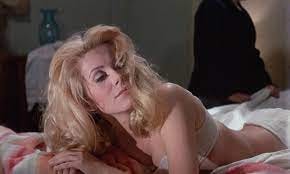
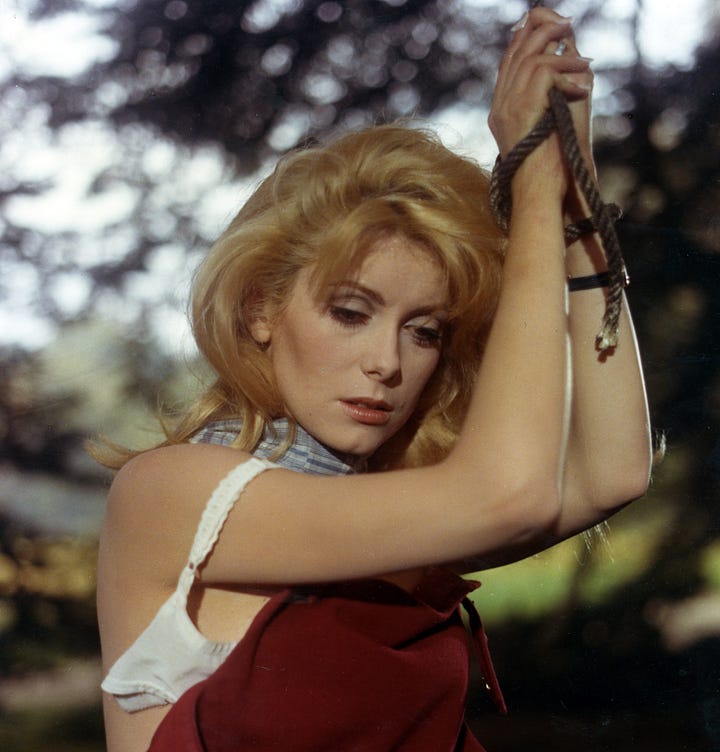
Born in Aragon in 1900, Buñuel has been cited by everyone from Woody Allen to David O Russell as a major influence. His career began in 1929 with the surrealist masterpiece ‘Un Chien Andalou’ (‘An Andalusian Dog’), which he co-wrote with Salvador Dali. This was followed by ‘The Golden Age’ (1930), which satirised sexual conventions and the values of the Catholic church.
Although Buñuel never ceased to be a surrealist who rebelled against bourgeois and Catholic values in both his work and life, ‘Belle de Jour’ (1967) was a mainstream success, winning Golden Lion at The Venice Film Festival. Authorities from Roger Ebert to Empire Magazine to Sight & Sound rank it among the greatest films ever made.
An inattentive housewife
In the movie, Severine (Catherine Deneuve) lives in a Parisian mansion with her conventionally handsome husband Pierre (Jean Sorel), who works as a surgeon. Although she does not need the money, she takes a job in a brothel during weekday afternoons.
A caged and somewhat lost individual, Severine flakes out of the job initially, but eventually comes back to explore her erotic desires. Her clients include a gynaecologist who has stern instructions as to how he likes to be humiliated; a bereaved father who acts out elaborate fantasies involving his daughter’s coffin; and Marcel, a young mob enforcer who offers a contrast to her loving but detached husband.
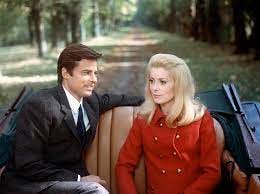
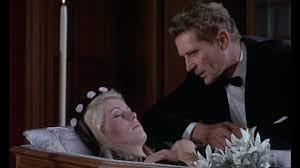
Throughout the movie, lines are blurred as to what is real and what is taking place in Severine’s imagination. Whereas a scene in which her husband’s friend Henry Husson (Michel Piccoli) throws mud at her while shouting insults is certainly a fantasy, which betrays Severine’s masochism. Another scene, in which a school aged Severine is touched inappropriately and later refuses to accept Communion wafer, may well be real, and goes a long way to explaining why she is the way she is.
With most scenes, for example the one where Severine plays the role of a client’s daughter’s corpse and is later kicked out in the middle of a rainstorm, it almost doesn’t matter if it is real. What matters is the insight it provides into what Severine is willing to tolerate and the society she inhabits.
She forms an attachment to Marcel, something which even the most sex-positive feminist would advise against. When her two worlds collide, it remains ambiguous as to what is really happening and what Severine is imagining.
Pioneering sex positivity?
Like his North European counterpart Ingmar Bergman, who could never fully shake his Protestantism, the work of Buñuel – who famously said “thank God I’m an atheist” – is riddled with Catholic influence.
Severine is successful by every metric that mainstream society offers, yet she is full of neuroses. This represents Buñuel’s attitude toward bourgeois values, and middle-class people’s emphasis on respectability and appearance over everything.
From ‘The Golden Age’ onwards, Buñuel explored and ridiculed how sexual hypocrisy leads to repression which eventually causes violence. One of the biggest hypocrisies is how women involved in prostitution are treated so much worse than the men who pay for their services.
For all his self-righteousness, Henry Husson himself frequents brothels. Pierre, who is virtuous to the point of being dull, also matter-of-factly informs her of his own unsatisfying trips to brothels when he was single.
It would be a cliché to say that the real star of the movie is the director, and in the case of ‘Belle de Jour’ it is only party true. Buñuel was no fan of actors, and his relationship with Deneuve (who had only recently become a star via ‘The Umbrellas of Cherbourg’) was even spikier than most. When they first met, through her lover Francois Truffaut, he told her “don’t do anything, and above all, don’t perform.”
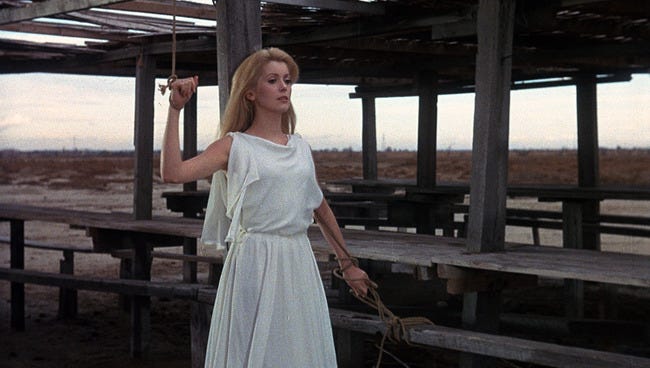
Despite apparently being misled about how much she would be put through during the shoot (being covered in farm muck is one of the milder assaults), Deneuve maintains an icy dignity throughout. Her pale and ghostly appearance provides a perfect counterpoint to the debauchery that is going on around her.
How the issues still resonate
The depictions of sex and sexuality in ‘Belle de Jour’ are exceedingly mild by the standards of any subsequent decade. The closest there is to nudity is when Deneuve’s buttocks can be seen through the black shroud she is wearing for a fetishist.
However, when it comes to repression, violence, and relations between the sexes, our culture has not even begun to resolve the many issues that ‘Belle de Jour’ raises. Sex positivity is the subject of a civil war that continues to rage within feminism.
One reading of Severine’s behaviour is that, as a middle-class woman who sells sexual access willingly, she is betraying less fortunate women who are forced into the sex industry. Feminist journalist Julie Burchill once wrote of women like Severine: “When the sex war is won, prostitutes should be shot.”
Society is no closer now than it was in 1967 to reaching a consensus on the ethical or philosophical implications of Severine’s behaviour. ‘Pretty Woman’, one of the most successful romantic comedies ever made, ends with a prostitute happily settling down with one of her johns.
Since the film’s release, the pornography industry has multiplied in size and scale, and it permeates much of the culture. In her 2021 book ‘My Body’, model Emily Ratajkowski reflects on how she used her beauty and sex appeal to become rich. In it she writes “I so desperately craved men’s validation, that I accepted it even when it came wrapped in disrespect.” She also recalls feeling ‘embarrassed by the thing that was also a source of pride.’
In his book of essays ‘The Curtain’, novelist Milan Kundera writes that literature’s most eloquent critic of overbearing bureaucracy was Franz Kafka, even though in his time government bureaucracy was an innocent child compared to what it is now.
Similarly, on-screen portrayals of the sex industry, its ugly side and the neuroses that lead people to enter it voluntarily, are now commonplace. But ‘Belle de Jour’ has never been bettered.



